











































Ellison uses wool from flock for her craft
BY AMY KYLLO | STAFF WRITERZUMBROTA — On a farmstead near Zumbrota lives a fiber artisan who is surrounded by the animals which provide her with their natural bounty.
Nancy Ellison owns Ellison Sheep Farm, where she cares for 50 chickens, four goats and her collection of 12 sheep.
“They can be like your cats and dogs,” Ellison said. “Indi-
viduals that are (your) pets.”
Ellison’s flock of sheep support her extensive fiber art work. She does spinning, weaving and felting. Much of her medium comes from her own flock. “To me, it’d be boring to not do it,” Ellison said. “I like doing things by hand.”

The artist’s sheep are a mix of Shetland, Icelandic and Gotland, plus other
breeds through cross breeding. Ellison works sheep into the design of many of her pieces. She is skilled at Scandinavian weaving techniques, some of which, she said, are complicated.

“There are so many kinds of weaving you can do that you can weave all your life and never explore all the possibilities,” Ellison said. “If I had to do a whole lot of one thing, I would be bored and wouldn’t want to do it. I like always learning something new.”
Ellison taught many classes around the area in the past.
“I’ve met lots of interesting people through the years,” Ellison said. “That’s been fun.”
In the last few years, she has stopped teaching classes, but she does teach occasional individuals. She hosts visitors at the farm a couple times a month by appointment for those who are interested in learning about sheep,
Sheep stand in their pen Feb. 23 at Ellison Sheep Farm near Zumbrota. Nancy Ellison’s sheep are a mix of Shetland, Icelandic and Gotland, plus other breeds through cross breeding.

spinning, weaving and more.
“Anything I teach somebody can live on, especially (if I) teach a younger person,” Ellison said.
Ellison does most of her fiber art work inside her home, but she also has converted part of the bottom story of the old dairy barn on her property into a space she can work or host visitors. The other side of the barn houses goats. In the arts area, the space has been painted white, and the gutters have been filled in with cement. A lone stanchion, which is partially hidden, stands as a testament to its earlier use.

The area is inviting, with a table and chairs, a place to heat hot water for tea, woven wall hangings hung up here and there, a small stained-glass gracing the back wall, and a bank of spinning wheels as well as different sizes of looms, some of which Ellison uses.
Ellison is a dealer of spinning wheels and looms and keeps her stock in various places on her farmstead.
Recentaly, Ellison made a shawl out of gray, black, brown and white wool she has saved from favorite sheep.
“I don’t plan too far,” Ellison said. “I just (do stuff) sometimes on the whim of the spur of the moment to get a new idea and get interested in doing it.”
Ellison page 2
13
17



15
21






































































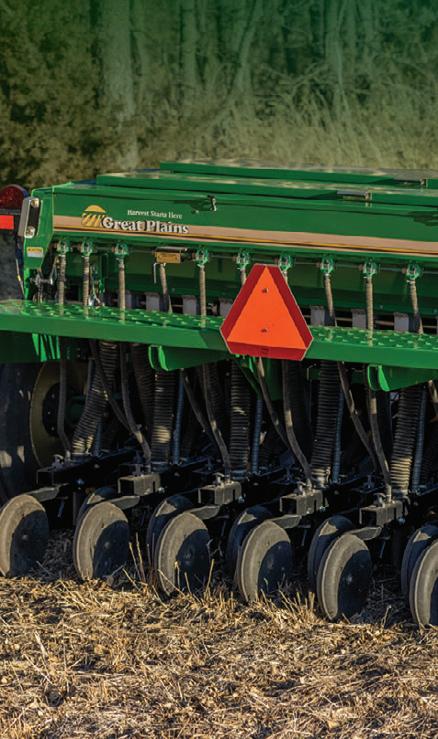


Ellison from page 2
In 1968, Ellison needed credits to renew her teaching certificate, so she attended the University of Oslo, in Oslo, Norway, for their international summer school. At the university, she took her first weaving class.
Ellison has been weaving ever since.
Her work has been featured in art galleries and shows. One of her favorite krokbragd pieces was at a show in Minneapolis this winter, and this past fall, she had pieces at two shows in Red Wing.
Ellison is part of multiple fiber organizations including the Zumbro
River Fiber Arts Guild, where she has been a member 45 years. Ellison said these guilds and groups provide a social life for her.
Some of Ellison’s pieces feature the natural colors of the wool from her own farm. Other pieces, such as her krokbragd weaving, use purchased wool.
Depending on the amount of wool Ellison harvests, she sometimes does the processing herself, while other times the wool is processed outside her farm.
Ellison does not breed her sheep anymore. They range in age from 9-18 years.
“(I plan to) keep on with my old sheep until they’ve all died of old age,” Ellison said. “They can just go peacefully on their own. So, that’s the retirement plan with the sheep herd.”














First Southeast Bank in Harmony and Canton is seeking a detailed oriented individual for a full-time Customer Service Representative/Loan Operations Assistant position.
Bank offers an exceptional benefits package and competitive wage.
Please apply at First Southeast Bank, 3 Main Ave North, PO Box 429 Harmony MN 55939, Attention: Debra A. Dowe Skaalen, Director of Human Resources.


Going to Florida is probably the most quintessentially Minnesotan vacation of all time, but for me, this spring was my first rite of passage.
My full family managed to sneak away at the same time, eight adults with eight separate schedules at a spacious Airbnb in southwest Florida near Fort Myers.

 Kyllo
Kyllo
I flew by myself, which I always enjoy. At 24, I should probably no longer feel like a cosmopolitan globe trotter for scheduling an Uber to the airport, climbing on a direct flight and finding the Uber area on the other end by myself, but I reserve the right to feel pretty cool.
The first thing that excited me about Florida was the palm trees. I have been in south Texas before, but this was my first experience with a tropical landscape. Nothing looked like Minnesota, and I loved it.
The tall palm trees were the most amazing of all. I enjoyed spending some of my vacation trying to capture the beauty around me on my cell phone camera; in part as a narcissistic and somewhat futile attempt to show off on Instagram, and in part because this job has made me much more aware of natural beauty and how to photograph it.
I am starting to want to buy myself a professional grade camera for my personal use so I can spend time capturing images in the places I visit. I am discovering that taking time to preserve the beauty for my memories in unique photographs is one way I can enjoy a space I am in.
One of the best days of vacation was a guided fishing outing. We were fishing just behind the Gulf of Mexico among little islands in water about 3-6 feet deep. Some of the small islands we encountered were made from mounds of shells the Native Americans, who lived in the area long ago, had left. They used the high points they created as lookouts.
We were out for about six hours, buzzing across blue waters, feeding the fish tasty bait, enjoying the sun, feeling the breeze on our faces and listening to country music on Gator Country 101.9.
The outing was all inclusive, so our guide, who had lived in the area his entire life, brought bait, and would bait and cast for you. Since I’m not a diehard fisherman, it was perfect. I got the fun of pulling fish in and none of the annoyance of detangling lines or slimy baiting, which I can and have done but don’t particularly











enjoy.
Among our catch, my sister pulled in a tiny, toothsome shark. It was a thrill to see a live shark that close. She and I had gone with our dad and a brother-in-law, and all I will say is I’m pretty sure the ladies caught more fish than the gentlemen. This was entirely due to my sister pulling in a lot of fish, but who’s counting?
Out on the water, occasionally we would see a dolphin. Apparently, they scare the fish away, but I was totally OK with that for the excitement of seeing something I had only seen in pictures and on decor made for kids.
Another day of vacation was spent on the beach. It also was a day of firsts. I had been to the beach on a drippy, rainy day in Texas, but a beautiful beach with sunshine, people and umbrellas was new.
I only had some of my skin peel off afterward from sunburn which, considering my complexion, was a win. I got sand in my swim suit, salt water in my mouth and all the typical delights of the beach I’ve always heard about. I really liked jumping and floating in the waves. I even pulled my mom out there too. Sometimes we all need that little bit of encouragement to get out there and enjoy ourselves. I know I’ve had people do the same for me many times.
On my last day of vacation, we went to a Minnesota Twins spring training game. I grew up as a Twins baseball fan, so getting to a game in Florida has been on the bucket list for a long time. I bought overpriced merchandise, took photos, ate food and of course watched the game.
Afterward, we traveled about five minutes away to the Six Mile Cyprus Slough Preserve, which features a mile loop boardwalk through the swamps. We saw alligators, turtles and snakes. I was particularly excited by the alligators, since a trip to Florida did not seem quite complete without them.
It was fascinating to see the cypress trees growing out of the clear water. Their knobby knees rising above reminded me of groups of wise gnomes. Overall, the place made me want to write a book.
Before I knew it, I was back in Minnesota again after an unearthly early Monday morning flight. I succeeded at my goal of unplugging from regular life for a few days and made pretty special memories in the meantime.




































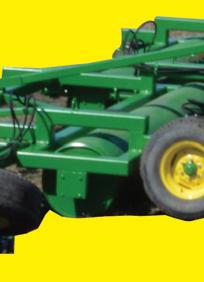


































































































Goplen, Fredrickson
grow pig business using non-GMO feed
BY AMY KYLLO | STAFF WRITERWANAMINGO —
What started as raising a few extra pigs that were not going to be purchased by a buyer has turned into a small business for Mandi Goplen and Glen Fredrickson.
The couple owns Small Batch Pork, a direct-to-consumer meat business near Wanamingo. They offer over 40 pork items. This year will be their fifth season. In their most productive year, they sold pork from 16 pigs.
The pigs for Small Batch Pork are raised on straw on the ground level of an old dairy barn and fed non-GMO feed, mostly raised by Fredrickson.
The business began after they realized the quality of the pork they had raised. Fredrickson suggested getting their pigs processed by a U.S. Department of Agriculture inspected plant and selling the meat.


Goplen was initially unconvinced.
“I’m like, ‘Who will buy meat from a guy’s freezer? Who’s going to do that?’” Goplen said. “That’s not a grocery store. That’s weird.”
The couple’s first pig was processed in March 2020. Around July 2020, Goplen took pork in a freezer to a farmers market.
“I had a $250 day, and I was like, ‘What? Why are people buying meat from a stranger at a farmers market?’” Goplen said. “That was pretty fun, because people were asking why you do what you do.”
After that initial market experience, they knew they had something.
Small Batch Pork products are now sold online for pickup as well as at farmers markets.
During the holidays, Small Batch Pork offers gift baskets. Meat prices





are a flat rate, so Goplen can create a custom basket within a predetermined budget.
In 2022, Goplen attended three farmers markets a week. This




year, she plans to be at one to adjust for their family life and what she perceives to be a changing market.
Goplen, who works full time in marketing off the farm, said they receive Christmas cards from friendships she has made at the market.
“People like to know farmers care,” Goplen said. “That face of the farmer is so valuable, and that’s where the markets are so fun, because you get to tell a story of what you’re passionate about.”
Fredrickson and Goplen’s journey of feeding non-GMO feed started on Fredrickson’s commercial pig operation.
Fredrickson and Goplen own Small Batch Pork as a separate side business from the larger farm business Fredrickson and his father, Grif, have. The father-son duo grows crops on 770 owned and rented acres and have commercial pigs; although, right now they are in a hiatus with pigs because of the market.

Goplen/Fredrickson page 7




from page 6
Around 2019, Fredrickson had twice the mortality rate of a batch of pigs die in a single weekend at his larger farm. The veterinarian determined it was caused by E. coli and Salmonella. A few weeks later, at a conference, Fredrickson began learning about glyphosate in connection to animal health.
“After going down a bit of a rabbit hole, I decided to try and get the glyphosate out of the hog’s diet to get healthier pigs,” Fredrickson said.
Fredrickson even did an informal test. At one location, which had two barns, he fed non-GMO feed to one barn and regular feed to the other. His feeder, who did not know what or why there was a difference, commented on the better health of the pigs in the non-GMO-fed barn.
Fredrickson raises non-GMO crops, including food-grade soybeans, and experiments growing wheat and peas. He has a
mill on site which he can use to grind feed.
Goplen said they are convinced non-GMO feed is the best option for them.
She even likes the flavor of the meat better.
Goplen said her mom, who does not normally enjoy pork chops, liked their pork chops because of the flavor difference.
Looking to the future of their business, Goplen and Fredrickson are exploring options for shipping. This concept comes with its own challenges because their business is not large enough to justify purchasing packing and shipping materials in bulk. They also want to make sure their products retain quality while balancing the costs of shipping.
Goplen said they think they have found an option and plan to do trial runs in the next month or so.
Additionally, they’re looking to partner with a restaurant.
“We just haven’t fig-

ured out what the system is for consistency,” Goplen said. “I’d hate to get people on a schedule and then we’re either robbing from current customers or we run short. ... There’s a fear of disappointing.”
Goplen said each year they have managed

Small Batch Pork has been different. Within their work, they have created flexibility for themselves.
“This is currently having to fit into our life versus driving our life,” Goplen said.
Goplen and Fredrickson are open to expanding Small Batch Pork but recognize their limitations.

“The biggest challenge with a small business is that it’s kind of how much effort you put
into it,” Goplen said. “It’s not a lack of interest in effort. It’s resources, mostly time and energy.”






















WINONA — Kristy Tibor’s yard fills with hundreds of flowers and thousands of blooms each year.
The University of Minnesota Extension Master Gardener grows it all, from a 10- by 40-foot pollinator garden to burgeoning patio pots, a salsa garden of peppers and tomatoes and a walkway lined with colorful annuals. Additionally, her 3/4-acre yard touts the blooms of 40 hydrangea bushes and three hydrangea trees.
“It just gives me a joy, a little bit of serenity,” Tibor said. “It brings me a sense of peace and just the color, the beauty of nature and how amazing it is that something so beautiful could grow from a small seed.”
Tibor has been part of the Extension’s Volunteer Master Gardener program since 2007. She took a brief break for a few years and returned to the program again last year. Master gardeners, she said, do not need to be garden experts. Rather, they have to possess an affinity for growing.
“For me, it’s a way to give back to the community doing something that I love,” Tibor said.

Her local chapter of the program, the Winona County Master Gardeners, hosts a garden tour to raise money to offer grants to local elementary schools to help them teach about horticulture and the environment.
This past year, there were six gardens on the tour, and Tibor’s was one of them. Visitors spent time traversing her landscape, taking in the pollinators and enjoying the wide array of blooms.
Tibor said the Winona County group is in transition. It used to be comprised of 30-40 members, but over time, the members aged out. Her team currently
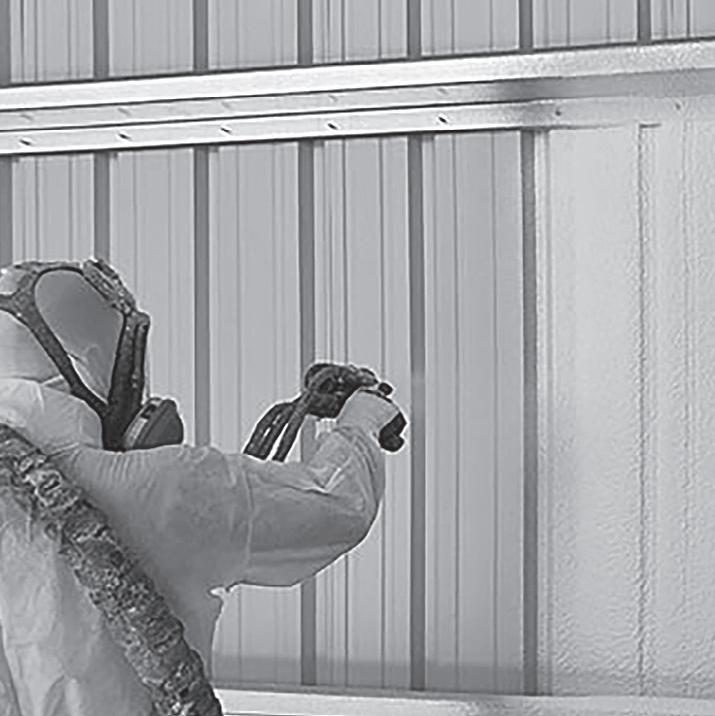
has 11 members and is looking to add more.
“It’s so nice to be a part of a group where you feel like you have that support,” Tibor said. “Each of us can choose something as our passion and work on it as a volunteer thing or get together to support a bigger (project).”
Statewide, the Extension Master Gardener volunteer program is growing, said Jackie Froemming, horticulture and Extension Master Gardener volunteer program educator.
“(It has been) increasing drastically since COVID,” Froemming said.
In the last five years, Froemming said the number of people applying and being accepted to the program has doubled. There are more than 3,177 certified volunteers in the state, and this year’s class adds an additional 550 participants.
Master Gardener volunteer page 10




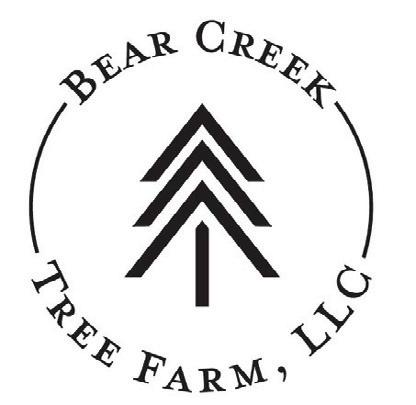





Extension offers tips for becoming a successful gardener
Jackie Froemming, University of Minnesota Extension Educator, has a number of tips for people who want to start a garden.
Her biggest piece of advice is to research and plan ahead. The University of Minnesota Extension offers tips on everything from starting a vegetable garden to adding native pollinator plants to including elements of landscape design such as pavers and mulch.
Her top tips include:
— Determine the purpose of the garden and whether it will be primarily be for growing vegetables or flowers. The purpose of the garden determines what type of soil amendments may be needed.


Master Gardener volunteer from page 9
“It’s meeting the needs of the people in Minnesota,” Froemming said. “They want to learn, and they want to share the knowledge they gain. They want to connect with neighbors, and it has been great.”
Master Gardener volunteers take a 40-to-60 hour core horticulture course upon enrolling in the program and spend 50 hours volunteering for projects and events that deliver horticulture education and information to the public. In subsequent years, volunteers must complete 25 volunteer hours and complete 5 to 12 hours of continuing education to stay current in the program.
The volunteers, Froemming said, are responsive to needs in their communities.
“If a volunteer is in a county where local foods are important to stakeholders, they can do volunteer work that relates to local foods,” she said. “(They provide) a localized response to the needs: clean water, local foods, plant biodiversity.”
Tibor’s chapter focuses on science-based projects.












— Test the soil. The University of Minnesota offers a soil testing lab. Instructions for submitting a soil test can be found at https:// extension.umn.edu/ managing-soil-and-nutrients/soil-testinglawns-and-gardens. Soil testing determines what amendments may be needed for the soil to provide the best health for flowers and vegetables.
— Start small. Gardens require maintenance and can always be expanded in subsequent years.
For a farmers market, they put together seed sowing samples with instructions to allow others to grow their own plants from seed. One member of the group is going to school for education and put together a soil health bucket that included worms, pill bugs, table scraps, spiders and compost to give people a sense of soil health.
“Instead of just brochures and handouts, it’s nice to show a visual,” Tibor said.
The group focuses on current events for their area, including things like non-native jumping worms and changes to the U.S. Department of Agriculture Plant Hardiness Zone Map.






— The University of Minnesota Extension website provides information on how to start vegetable and flower gardens as well as raised beds and container gardens.
— Extension offers tips for how those without access to plots of land can garden in containers. Even vegetable gardens can be grown in container pots.
Master Gardener volunteer page 11



Find out more about the University of Minnesota Extension Master Gardener volunteer program. Applications are accepted Aug. 1 to Oct. 1. Financial assistance is available. More information can be found at: https://extension.umn.edu/master-gardener/about-master-gardener.



SPRING VALLEY — No matter
the season, Earth Dance Farm provides vegetables, greens and more to around 200 members through its Community Supported Agriculture program.
The direct-from-farm foods are available even in the cold of winter and sent to tables in southeast Minnesota and the Twin Cities metro area.
“I’m huge into local, whether it’s food or whether it’s shopping at (my local hardware),” said Norm Gross, owner of Earth Dance Farm. “It is keeping your dollars in your community and keeping a vibrant, rural life.”
CSA members of Earth Dance Farm, which is located near Spring Valley, receive a variety of products from 15 acres of vegetables. Gross offers spring, summer, fall and winter CSA shares, and customers can purchase these shares to receive fresh produce all year. These shares include seasonal offerings as well as items which are offered in multiple seasons.
Gross offers broccoli, scallions, cucumbers, apples honey, greens, asparagus, tomatoes, melons, dry beans, popcorn, radishes, potatoes, carrots, turnips, cabbage, garlic and herbs, among other things.
“I really believe that ... you should eat a variety of things in season and learn how to enjoy it,” Gross said. “Variety is great. Diversity is great.”
The name of Gross’ farm was inspired by a poem he wrote and the idea of working with the earth despite the unknowns of farming.
Though Gross has had a CSA
program for many years, he has not spent his entire career in agriculture. Gross grew up on a farm in Iowa but spent the first 25 years of his career owning a painting business with his brother in the Twin Cities.
After Gross’ best friend, who had seven children, was killed in Iowa, Gross began to seriously pursue his idea of living in the country.
“It just changed things,” Gross said. “Made me think a little more about what I wanted to do and not (to be) afraid to make changes.”
After the death of his friend, Gross began looking for acreage further outside of the Twin Cities.
Gross page 14







Carrots lie in a wagon Feb. 28 at Earth Dance Farm near Spring Valley. Norm Gross stores fall vegetables such as these in a cool, dark room, sand or a cooler.
(Left) Potatoes rest in storage Feb. 28 at Earth Dance Farm near Spring Valley. Norm Gross’ Community Supported Agriculture program offers shares year-round.




















What is a Community Supported Agriculture program?
Rachel Wandrei, of Minnesota Grown, the No. 1 resource in Minnesota for CSA listings, has answers. Wandrei said a CSA is all about consumers having a relationship with farmers, sharing in both the financial responsibilities of a farm and in the products produced by the farm.
CSA members pay either a fee upfront or spread throughout the time of the share. In exchange, members receive a regularly scheduled box or amount of goods, similar to a subscription service.
There are a variety of agriculture products offered, from vegetables and fruit, to meat, dairy, baked goods and more. As a CSA member, customers also share in the loss if the farm they participate in is not able to produce the goods it normally would.
“There’s a mutual benefit for the farmer and the consumer,” Wandrei said. “The consumers that are accessing fresh, high-quality agricultural products, … then, on the other side, that economic support for the farmer can be really essential.”
Wandrei said Minnesota Grown saw increased consumer interest in CSAs measured via website traffic in 2020. Interest declined slightly from the peak during the coronavirus pandemic, but since then, interest has been steady.
Wandrei said she sees the CSA model as continuing to be valuable, especially for beginning farmers, first-generation farmers and immigrant farmers.
“It’s a really great way to access capital and get started,” Wandrei said. “Having that relationship with the customer, you’re getting direct feedback. You can learn from the consumers what they like eating. You know what they’re excited about (and) what grows well where you’re at.”
Trends in CSAs include season extensions, such as a fall or spring share, add-ons like eggs or bread, and aggregation hubs where farms provide products jointly. Wandrei said CSAs are also beginning to utilize digital tools that allow online ordering, payment plans and more.
Looking for a CSA?
— Ask about size:Wandrei recommends, for those shopping for a CSA share, asking how large the share is and how often it will be received to prevent receiving an overabundance that will go to waste. One option to keep the size manageable is to share it with a friend or neighbor. The Minnesota Grown website offers a list of questions consumers can ask a farm to help them find a good fit.
— 109: The number of CSA listings on the Minnesota Grown website. Customers can search for local farms based off of town or zip code.
— 400: The number of CSA pickup locations in Minnesota on the Minnesota Grown website.
— 21: The number of CSA farms within a 50mile radius of Rochester.
Gross from page 13
He purchased his farm in December 2005 and moved in 2006.
The first year, he supplied produce for about 8-10 friends.
“I didn’t have a lot of doubts,” Gross said. “Obviously, it’s scary starting from scratch or starting new, but I had a lot of just fundamental confidence in the soil you take care of.”
Gross had been a CSA member, gardened in a community garden in the Twin Cities and had worked on a CSA farm near the Twin Cities one day each week for a growing season taking notes.
“(I have) the faith that the ground and crops want to grow,” Gross said. “Those seeds are going to try hard to grow. They want to. ... That’s what farming is. ... You’re helping those seeds, creating a good environment for them to produce for you.”
Gross said his goal in the beginning was to
grow about an acre of vegetables more per year. He spent about seven years in that growth mindset.
“A lot of it is scale, and not just scale of land or of members or of growth, but scale in your mind,” Gross said. “Being able to just process it at different levels or stages of growth.”
After the initial seven years, Gross spent the next seven years expanding his offerings.
In addition to the fields and orchard, Gross also has a greenhouse and several hoop houses. In the unheated hoop houses, he can grow hardy greens like spinach and kale even during the winter months. Gross also stores root vegetables, potatoes and more for the winter shares. Vegetables are stored in
sand, a cool, dark place, or a cooler.












Gross and his wife, Diane, who works at the Mayo Clinic but is active on the farm, are assisted by interns, most of whom are seasonal.
Interns live on the farm. There is a bunk house and two tiny houses for bedrooms and a separate area of shared living space and other amenities. The interns and the Grosses eat together three evenings a week.

could never cook at that age and some of the things they talk about is very rewarding,” Gross said. “It just really touches my heart. I’m mentoring and fathering again.”
“My hope is that they can thrive,” Gross said. “Even if they’re just here for one season, which most of them are, that it’s one where they look back fondly and count this as one of their homes.”
Gross said the interns are part of what he enjoys about his work.
“To hear young people laughing and having the time of their life, ... cooking like I




Most of Gross’ customers live in the Twin Cities. He said four of five shares go to the metro where they are distributed at one of the 19 drop sites located there.
Customers can opt for a custom share to control what is in their box for an additional cost, but Gross said most do not.
“(CSA members) have to have a little bit of an adventurous spirit and kind of enjoy being in the kitchen,” Gross said.
As he looks to the future, Gross is not looking to expand. He has begun experimenting with no-till farming practices and plans to increase this practice as he reduces the number of overall acres.
“I’m going to try to stay on the top of my game but have less stress,” Gross said. “I know I’ve been successful to do this for 20 years, and I don’t need to prove anything.”

After months of warmer than normal temperatures in Minnesota, climatology and crop experts made predictions about this year’s planting season.
The recent moisture has them reevaluating those predictions as planting season nears.
Seth Naeve is a soybean agronomist with the University of Minnesota Extension.
“It was both a mental reset for farmers, and now there is a real-life physical reset for farmers,” Naeve said. “Things are going to be too wet for a little while.”
Naeve said the recent snow and rainfall will recharge the moisture in the southeastern part of the state.
“That kind of attenuated some of the concern with some of the dry conditions,” Naeve said. “Where there was rainfall, we still have relatively cool temperatures. So, we’ll be back in a normal situation where the ground will warm and dry out on top, (so) farmers can get back in the field.”
Prior to the moisture, he said, it was hard for farmers not to think the season was much further along than it


We have 14 different types of brats, ground beef and ground pork patties available for purchase!

was.
“This is grounding to look at the calendar and know where we are,” he said.
He said, often times, soybean farmers will plant just ahead of the last frost date knowing that it will likely take time for the plant to emerge and it will do so just after the last frost.
Knowing exactly when to plant, he said, is a delicate balance. The concern with planting too early is the soybeans can become susceptible to disease and other problems, Naeve said.
Overall, Naeve said the recommendation for planting soybeans remains during the first week of May.
“That’s kind of the ideal window and splits the difference,” Naeve said. “There’s a low risk of having any problems, and (farmers can) still capture 95%99% of the yield gain.”
Peter Boulay, assistant state climatologist with the Minnesota State Climatology Office, said the recent moisture was essential.
Weather page 16










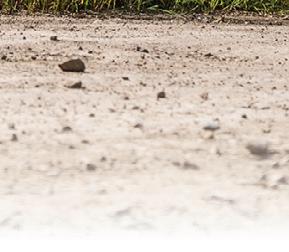


















from page 15
“The bottom line is you couldn’t have asked for a better situation to help out crops this year,” Boulay said.
All of southeast Minnesota improved a notch on the state’s drought map, he said.
“For it to happen, this is the perfect time of year,” Boulay said. “Farmers don’t want it wet in May, but late March, that’s OK. At this point, solid or liquid, we’ll take any moisture we can get.”
The most recent rainfall, he said, contributed to water levels in rivers as well.
Jeff Coulter is a corn agronomist with the University of Minnesota Extension.
He agreed that the moisture plays an important role in spring planting this year.
“It might not be excessively dry at planting,” Coulter said. “It might be optimal.”
Coulter said that the state has had a dry fall and winter and subsequent years of drought, but the moisture may have improved the situation somewhat this year.
“The subsoil might be dry, even with this rainfall,” he said. “If there’s not timely rainfall during the growing season, we might have some times of intermittent drought.”
If things are dry at planting time, Coulter recommends farmers plant as deep as 2.5 inches instead of the usual 2 inches to access more moisture and allow the plants to emerge in a timely fashion.
pre-plant tillage and planting. The longer you wait, the more moisture evaporates.”
He said it is too early to know how the growing season will go yet, and it is common for southeast Minnesota to be too wet for planting in the spring. However, planting in drier conditions means fewer problems with soil compaction, Coulter said.
Anthony Hanson is an entomologist and University of Minnesota Extension Educator who specializes in integrated pest management.
Hanson is forecasting a higher insect population this year given the warmer than normal winter temperatures. He encourages farmers to keep an eye on their fields and watch for insects, including soybean aphids.
“We’re gearing up for that one a little bit,” Hanson said.
Hanson said colder winter temperatures that knock back the insect populations never came this year, and if a cold snap hit, it was not sustained long enough to make an impact in insect populations.
He said farmers should do what they can to scout their crops early and often. He recommends farmes use 250 aphids per plant as an economic threshold, triggering farmers to think about spraying the following week.
“250 gives you a week lead time,” Hanson said.
Hanson said farmers will also need to keep an eye on grasshoppers and defoliating insects this year.
Temperatures may have made it low enough to impact the mortality of alfalfa weevils, but he said if farmers had a major issue in their area last year, they can anticipate the same for this year.



“Avoid unnecessary tillage prior to planting and tilling any deeper than needed,” Coulter said. “You don’t want an excessive amount of time between

“The snow cover may have helped a bit,” Hanson said.
To monitor the state’s drought condition, visit: https://droughtmonitor.unl.edu/ CurrentMap/StateDroughtMonitor.aspx?MN























































• Constructed of heavy-duty 12ga. Steel. 2” square tube frame
• Feeds round of square bales, grain, silage and TMR
• Adjustable spring-loaded locks for any size cattle
• Entry door & raised center “v” platform
• Adjustable spring-loaded locks on all four sides




•
Double Bar Feeder
• Feeds round or square bales, grain, silage and TMR
• Constructed of heavy-duty 12ga. steel
• Heavy-duty 2” square tube frame
• “V” floor for easy feed flow
Fence Line
Bunk Feeder
The Fence Line Feeder is built for barnyard or fence line feeding
• Feeds grain, silage and TMR
Over the years, the business has spread by word of mouth, and the Tentises have never advertised. When things slowed due to the coronavirus pandemic, they put a sign on the road, and the work returned.
when he was 12 years old.
“When I was growing up, (that was) probably the highlight of my life to see that tractor come in,” Tentis said.
Tentis said he regrets not buying the tractor. However, recently, the rolling chassis has returned to the family. Tentis is a silent partner alongside his grandson, Alex Tentis.
“Everybody in the area knew the Orange Lion,” Tentis said. “It was a very competitive, good running tractor.”

• Heavy-duty 2” square tube frame
• Inside double bars 8” apart for minimum feed waste
• Constructed of heavy-duty 12ga. steel.
• Insi wa steel.

Tentis has been driving tractor since he was old enough to push the clutch. His first experience was driving a Farmall Super C to rake hay.
The mechanic said he remembers every tractor that his dad purchased, including the International 806 with a six-bottom plow behind it, purchased
Tentis’ dad did tractor pulling. His last pulling tractor was an Allis-Chalmers 210, referred to as the Orange Lion, which had four turbo chargers on it when his dad retired it in the late 1980s.
After his death, the tractor was sold.
“Over the years, we had worked on it so much, and I just didn’t know what I was going to do (with) it if I did buy it,” Tentis said.
Tentis owns two pulling tractors as does Alex. Before the disruption of the pandemic, Tentis attended tractor pulls every weekend for three months. Now, that number has been reduced. He said between his tractors and Alex’s, they attend 10-15 tractor pulls a year.

SHB Basket Feeder for sheep
• 1-1/4” Square tube frame


Heavy-Duty Tub Feeder
Heav y-D yyq tube frame

• Heavy-duty multipurpose tub feeder
• Constructed of heavy-duty 12ga. steel.
• 1-1/2 x 1/4” flat hoops spaced 7-1/4”
• Stacks for transport
• Stacks for transport
• Length 66”, Width 66”, Height 45”


Tentis also owns six restored tractors, most of them Internationals. Tentis even has that tractor his dad purchased when he was 12.
Tentis is not looking to retire.

“I love what I do,” Tentis said. “I love my customers. I like getting dirty, greasy, rebuilding engines. ... You wake up in the morning and you have a purpose.”
• LCF 48” long, 12” wide, 12” high
• CF 48” long, 8” wide, 8” high


WTF S heep Feeder
• Heavy-duty 2” square Walk-through for hay and grain
• Basket rod spacing 2-3/4”
• 8” alley through center
• Remove doors to create row feeder
• Leng
• Length 8’, Width 36”, Height 36”
Creep Feeder for goats
• 8’, Width 36”, 36” ats








Wayne
Nancy
10 of which are housed at the ranch and six of which
—
Wayne Gunderson bought his first cutting horse around 2012. Within about three years, his cutting horse string had grown to over 30 horses.
“It’s like a chip; you just can’t have one,” Wayne said.
Wayne and his wife, Nancy, own CLG Ranch near Stewartville. The ranch is named after the initials of their daughter.
“I told him he needs a horses anonymous meeting, because I think he’s powerless over horses,” Nancy said.
The Gundersons own 16 adult horses, 10 which are housed at the ranch and six which stay at a trainer. This spring, they will welcome six foals.
In his initial flood of cutting horses, Wayne said he wanted to get a horse of each color and
breeding.
Eventually, the Gundersons decided to cut back their herd to 20 and started to focus on better quality horses. This choice was difficult, Nancy said.
“You develop a personal relationship with each of these horses coming in,” Nancy said. “It was hard to let go of them. ... Every one was a little different.”
Wayne said of the foals coming this year, a portion will carry pre-
mium genetics while the others will make good horses for amateur riders working with cattle.
The Gundersons have begun to sell genetics from their herd and want to continue to do so. However, in order for a horse to be valuable, the mare must prove she is a winner in the show ring.
Over time, Wayne said they realized the mares they owned did not have the genetic power to achieve what they wanted as far as excellence in cutting horses. The Gundersons said a cow horse has to like doing its job and be interested in cattle.
“We have been up-




grading our breeding side to it,” Wayne said. “We’ve been buying some pretty good mares with really good genetics.”
Gunderson page 22

















































651-923-4048 www.vothinsurance.com
109 Broadway | Goodhue, MN 55027

Wednesday, April 10th (online only) moving auction for Kirk and Wanda Boyd; Bidding closes at 5 pm on Wednesday, April 10th; Preview date Tuesday, April 9th from 8 am to 5 pm; Payment and pickup date Thursday, April 11th from 9 am - 5 pm at auction location 52092 120th St Lyle, MN 55953; Selling skid loader, flatbed trailer, power and hand tools, furniture and household items (Maring)
Sunday, April 14th (online only) Estate Auction for David W Olson Estate; Vehicles, outdoor equipment, power and hand tools, household items and furniture (Maring)
Sunday, April 14th (No-reserve, online only) Real estate auction on 2 bedroom rambler home on Lindsey Lake, MN; Part of the David W Olson Estate Auction (Maring)
Wednesday, April 17th (online only) Farm real estate auction 156+/- Acres of Bare Crop Land in Section 15, Warsaw Township, Rice County, MN 140 Tillable Acres; Bidding opens Monday, April 8 at 8 am and closes Wednesday, April 17th at 10 am; Selling in two separate parcels (Maring)
Monday, April 22nd (online only) Estate and Moving Auction for Harris & Peggy Nelson Estate; Tractors, tools, lawn and garden, household items; Bidding opens Saturday, April 13th at 8 am; Bidding starts closing Monday, April 22nd at 4 pm; Inspection date Friday, April 19th from 9 am to 5 pm; Payment and Pickup date Tuesday, April 23rd and Wednesday, April 24th from 9 am to 5 pm (Maring)
Wednesday, April 24th (online only) Farm Estate Auction for Darrell Schultz Estate; Tractors, combine, planters, haying equipment and misc farm support equipment (Maring)
Tuesday, June 4th (online only) Early Summer Area Farmers Consignment Auction (advertising deadline May 1st) ; Accepting consignments May 15th - May 24th 8 am to 5 pm; Bidding opens Saturday, May 25th at 8 am; Bidding starts closing Tuesday, June 4th at 10 am (Maring)
Wednesday, June 5th (online only) Estate Auction for the James (Jim) Treblehorn Estate; Motorcycles, tractors, tractor parts, tools and much more (Maring)
Tuesday, June 11th (online only) Early Summer Area Farmers Consignment Auction; Advertising Deadline
Tuesday, May 14th; Bidding opens Friday, March 31st and closes Tuesday, June 11th at 10 am (Hamilton)
Wednesday, June 19th (online only) Auction for Denny and Donna Beyer; Restored tractors, tractor parts, vehicles, power and hand tools, antique toy tractors and more (Maring)
Sunday, June 30 (online only) M2 Auto Parts Inventory Reduction Auction; Vintage and Antique Vehicles and Parts; Approximately 300-400 cars (Hamilton)
Wednesday, July 17th (online only) Antique and Collector Tractor Auction for Paul and Bonnie Bauer; Restored tractors all parade ready and moldboard plows to match tractors (Maring)
Tuesday, July 30th (online only) Pre-Harvest Area Farmers Consignment Auction; Advertising deadline
Friday, July 5th (Hamilton)
Saturday, August 10th @ 8:30 am (live and online) Pre Harvest Area Farmers Consignment Auction (advertising deadline July 9th); Accepting consignments July 30th - August 7th (Maring)
*More dates to be added as the year goes on contact to schedule your auction or consign today
Gunderson from page 21
Wayne has worked with various cutting horse trainers over the years. Most recently he has developed a relationship with reined cow horse trainers Ryan and Samantha Gallentine, who live near Belle Plaine. The Gallentines, who own Gallentine Performance Horses, train the Gundersons’ horses. They also help advise in buying decisions.
In the past, Wayne has competed at cutting horse competitions. He said his proudest moment came when he won reserve champion on a stallion named Rusty, in a 4-year-old non-professional di-
This year, after taking a few years off, Wayne is returning to showing and plans to compete in local shows.
Wayne’s first experience with horses was 30 years ago when he took a job at a feed lot where he rode horses to check pens. The experience stuck.
When the Gundersons’ daughter was 8 years old, they bought her a horse. Then, a few years later, Wayne’s horse journey began.

“I knew it was time again to get back into it,” Wayne said. “I missed it. I needed a hobby.”
Wayne sought help from a trainer for one of his horses, and the process helped him think about what he wanted to do with horses.
“I wanted to get into the more athletic-type horse,” Wayne said. “Cutting horses always intrigued me, but ... it’s an expensive game.”
The Gundersons’ biggest purchase came from a gala sale in Texas. There, the horses walk down a red carpet. They come through fitted, sprinkled in actual glitter and are then sold.


This premium mare has won cutting horse futurities in South Dakota and Iowa as well as placing in Minnesota.
Gunderson page 23































After years of searching for the perfect home that fits their needs or would be excited to renovate, John and Nancy decided to build! Around that same time, they attended the Eagle Bluff Environmental Learning Center’s presentation about the Passive House movement – an exceptionally rigorous building standard that results in a home which, using the latest technologies, has the smallest carbon footprint currently possible.
The concept hit home. John says he doesn’t consider himself an “environmentalist” per se; he just believes in living within his means.


“We believe in energy conservation. We believe in protecting our valuable non-renewable resources. But we’re also big believers in electricity and living the lifestyle we’ve come to know within reason, but just to do it more efficiently and more economically.”
To see more testimonials visit us at www.solarconnectioninc.com
































